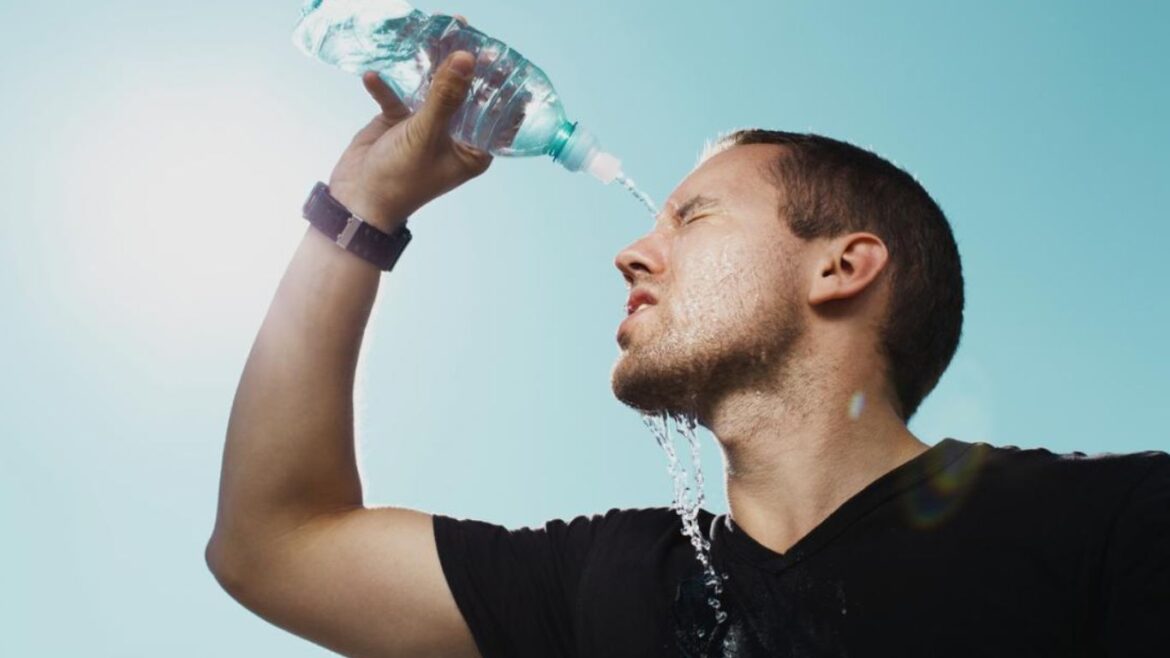Heat stroke stands as one of the most severe heat-related illnesses, marking a critical condition where the body’s temperature regulation fails under extreme heat, leading to body temperatures soaring above 103°F (39°C). This alarming state not only disrupts normal bodily functions but can also inflict lasting damage on vital organs if not swiftly addressed. Recognizing the early signs of heat stroke — such as intense headaches, dizziness, lack of sweating despite the heat, and rapid heartbeat — is paramount in averting severe health consequences, including potential fatalities. Our aim with this blog is to underscore the importance of being vigilant about these early warnings. By educating our readers on how to identify these symptoms and urging immediate action, we hope to empower individuals with the knowledge to effectively respond to this dangerous condition, thereby safeguarding themselves and their communities against the perils of heat stroke.
Recognizing the Red Flags: A Guide to Heat Stroke Symptoms and Immediate Actions
Understanding Heat Stroke
Heat stroke is a severe medical emergency that occurs when the body overheats, typically due to prolonged exposure to high temperatures or intense physical exertion under the sun. This condition is characterized by the body’s failure to regulate its temperature, leading to a rapid rise in core temperature to 103°F (39°C) or higher. Unlike heat exhaustion, its milder counterpart, which can present with symptoms like heavy sweating, weakness, and nausea, heat stroke shuts down the body’s cooling mechanisms. This leads to severe symptoms such as the absence of sweating, throbbing headaches, dizziness, and even loss of consciousness or seizures.
The gravity of heat stroke surpasses that of heat exhaustion due to its potential to cause damage to the brain, heart, kidneys, and muscles. The longer treatment is delayed, the higher the risk of serious complications or death. Certain individuals face a higher risk of developing heat stroke: the very young and elderly, those with chronic illnesses like heart disease or diabetes, individuals taking medications that affect the body’s hydration and heat regulation, and athletes or outdoor workers who are highly active in hot conditions. Awareness and understanding of these risk factors are crucial in preventing heat stroke and ensuring prompt action is taken to mitigate its effects.
Recognizing the Red Flags
Heat stroke is a severe condition characterized by a series of alarming symptoms that signal the body’s failure to cope with excessive heat. The primary symptoms include:
- High Body Temperature: A core temperature of 103°F (39°C) or higher is a clear indicator of heat stroke, significantly above normal body temperature.
- Altered Mental State or Behavior: Individuals may experience confusion, agitation, or slurred speech, indicative of the heat’s effect on brain function.
- Nausea and Vomiting: These symptoms reflect the body’s distress and its inability to handle the overheating.
- Flushed Skin: The skin may appear red and hot to the touch as the body tries to dissipate excess heat through the skin.
- Rapid Breathing: An attempt to expel heat through increased respiratory rate, leading to shallow, fast breaths.
- Racing Heart Rate: The heart pumps faster in an effort to cool the body by increasing blood circulation to the skin and away from the core.
- Headache: A common symptom, often described as severe and throbbing, as the body struggles with the heat.
Less common symptoms of heat stroke include:

- Muscle Cramps or Weakness: Particularly in the limbs, as a result of electrolyte imbalances due to sweating.
- Seizures: In severe cases, the overheating can cause neurological disturbances leading to convulsions.
- Loss of Consciousness: A dangerous progression of symptoms leading to fainting or coma.
For quick reference:
- Core temperature >103°F
- Confusion/Agitation
- Nausea/Vomiting
- Red, hot skin
- Fast breathing
- Increased heart rate
- Severe headache
- Muscle weakness/cramps
- Seizures
- Fainting/Coma
Immediate Actions: What to Do
When someone exhibits signs of heat stroke, immediate action is vital to prevent potentially fatal consequences. Here’s a step-by-step guide on how to respond:
- Call Emergency Services Immediately: Time is of the essence in treating heat stroke. Contact emergency services as soon as you recognize the symptoms. Quick medical intervention can be lifesaving.
- Move the Person to a Cooler Place: Reduce the person’s body temperature by moving them to a shaded or air-conditioned environment. It’s crucial to remove them from the heat source as quickly as possible.
- Lower Their Body Temperature: Use cool cloths or even a cool bath to start lowering the person’s body temperature. Apply these to the skin, focusing on areas with abundant blood supply like the armpits, neck, and back. This helps facilitate heat dissipation.
- Do Not Give Them Drinks if They Are Not Fully Conscious: Offering fluids to someone who is not fully alert can lead to choking or aspiration. Wait for professional medical personnel to arrive before attempting to give any fluids.
The importance of not delaying medical treatment cannot be overstated. Heat stroke progresses rapidly and can damage the brain and other vital organs within minutes. Acting quickly can significantly reduce the risk of long-term complications or death.
During a heat stroke episode, certain actions can be harmful and should be avoided:
- Do Not Use Ice or Extremely Cold Water: This can cause blood vessels to constrict, trapping heat inside the body and worsening the condition.
- Avoid Giving Fever-reducing Medications: These can interfere with the body’s heat regulation mechanisms.
- Do Not Leave the Person Alone: Continuous monitoring is essential for noticing any changes in their condition.

Prevention Tips
Preventing heat stroke, especially during the peak of summer, requires adopting simple yet effective measures. Here are quick tips to help you stay safe:
- Wear Loose, Lightweight Clothing: Opt for light-colored, breathable fabrics like cotton or linen. These materials allow your body to cool more efficiently by facilitating sweat evaporation and air circulation, reducing the risk of overheating.
- Stay Hydrated: Drink plenty of fluids throughout the day, even if you don’t feel thirsty. Water is your best bet, but sports drinks can also help replenish electrolytes lost through sweat. Hydration aids in maintaining normal body temperature by enabling sweat production, a natural cooling mechanism.
- Take Frequent Breaks in the Shade or Indoors: During outdoor activities or work, ensure you rest periodically away from direct sunlight. Find a cool, shaded, or air-conditioned area to allow your body temperature to normalize. These breaks can be crucial in preventing overheating.
- Avoid Strenuous Activities During the Hottest Part of the Day: Schedule intense physical activities during the cooler parts of the day, such as early morning or late evening. The sun is most intense between 10 a.m. and 4 p.m., so limiting exposure during these hours can significantly reduce the risk of heat stroke.
Implementing these strategies can significantly reduce the risk of heat-related illnesses, including heat stroke, ensuring a safer and more enjoyable summer season.
Also read: Top 5 Summer Foods Which Directly Enhance Skin Health
